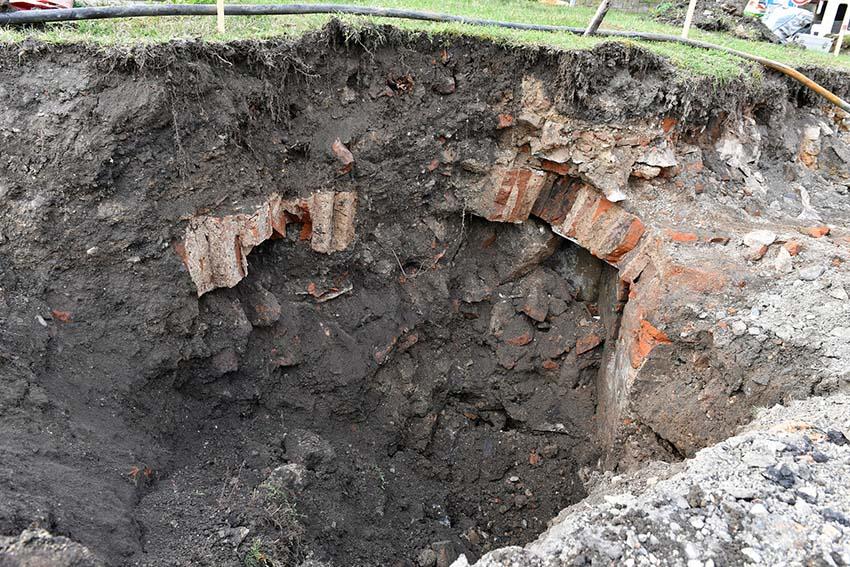Excavator hit the remains of historical buildings while repairing the intersection below Větruší
An excavator during the reconstruction of the roundabout under Větruší hit the remains of historical buildings. The builders called museum experts to examine them. For them, the discovery was not surprising, as the site was formerly the site of the Ostrov district, famous for its lively social life. The museologists noted that the reconstruction of the roundabout was a reminder of the devastating power of wartime bombing less than a month before the anniversary of the Allied air raids on Ústí nad Labem. The Museum of the City of Ústí nad Labem announced the news.
"These were two cellars where brick vaults and plastered walls were clearly visible. We photographed the uncovered remains of the buildings," said Eliška Wiesnerová, head of the archaeological department of the Ústí Museum.
The district was founded in the Middle Ages and got its name from the fact that it was bounded on two sides from the rest of the town by the Elbe and Bílina rivers. In German it was called by the phonetic derivative Ostr. There was a cinema, a shooting house with a large hall, pubs and industrial enterprises. In the area of today's roundabout, Ostrovní and Střelecká streets crossed.
The quarter ceased to exist on 17 April 1945 not long after noon. Allied planes of the US 8th Air Force dropped over 250 tons of bombs on Ústí that day. A large part of them exploded on Ostrov, which was located right at the intersection of three railway lines and the tracks were the main target of the air raid. Two days later, another 300 tons of bombs fell on the city, again hitting the Ostrov district hard.
"It was in similar cellars to those now revealed during the excavation that many local residents found death. They hid there for safety, but if a house got a direct hit, they didn't stand a chance. The buried victims could not be rescued from the totally devastated neighbourhood until weeks after the raid, when the streets were cleared of debris. And the last bodies were found more than a year after the bombing," Martin Krsek, head of the history department, described the situation in the Ostrov district at the time.
In addition to the high probability of discovering the cellars of old houses on the construction site under Větruší, historians say the discovery of unexploded ordnance cannot be ruled out. According to contemporary statistics, up to one in ten bombs did not explode. That is why years ago, when the roundabout was being built, the site was examined by pyrotechnicians.
Source: Muzeum města Ústí nad Labem and CTK
Photo: Muzeum města Ústí nad Labem









